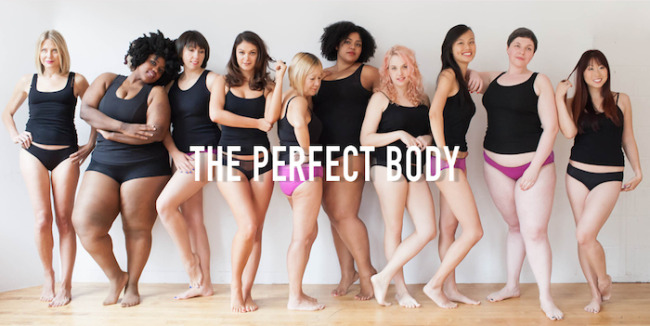The word phenomena is one I’ve been coming across a lot the past few weeks.
In “Virtual Bodies in Virtual Worlds: A Phenomenology of Play in Video Games,” Benjamin Gattet, for one, applies Maurice Merleau-Ponty’s discussion of phenomena to “the experience of playing a video game” through the use of a “phenomenology of play” in the hopes of shedding “light on experiences of play considered marginal today.” And in doing so, he explains that Merleau-Ponty’s goal is to overcome “the belief in an objective world—by calling for a return to a proper description of phenomena. This can only be done by putting our unquestioned belief in an objective world aside. This leads to the discovery that the body, as an ambiguous and undetermined being, is our fundamental way of being in the world, and that all consciousness is perceptual.” Merleau-Ponty’s conception of phenomena, then, highlights the ways material embodiment impacts our understanding and experience of the world and of the phenomena that we encounter.
In Graphesis: Visual Forms of Knowledge Production, Johanna Drucker (whom I’ve mentioned before) explains that this understanding of materiality impacts not only our experience of phenomena but the ways we study such things; indeed, she argues for the use of humanistic methods in implementing an approach that highlights the codependency of phenomena and their observers and that “is centered in the experiential, subjective conditions of interpretation.” Thus, a humanistic approach to the idea of phenomenology, to the study of how we experience and understand the world, allows us to more fully interrogate the relationship between phenomena and observer.
Gattet implements such an approach in his exploration of the phenomenology of play because his goal is “not to refer back to the old dualism of mind versus body, but to show that our body grounds us in a world and makes sense of it, in the way that all knowledge, every experience, is not only felt, but understood through it.” And in doing so, he explores the manner in which play is an embodied experience: “When we first encounter a game, this embodied knowledge is not yet ours, and our movements are still abstract…We are trying to build a living relationship between the movement of our fingers, and the action unfolding on the screen. We live outside of the game and interact with it from the outside.” And Gattet explains that this body that interacts with games from the outside, that “projects itself onto objects, other bodies, and the world,” is what Merleau-Ponty calls the virtual or phenomenal body:
This is the body of our lived experience that exists outside any notion of an “objective” world…When I play, I use my virtual body to interact with the game and exist in the game world. But I do not have two bodies: one physical, sitting on a chair pushing buttons, and one virtual, projected into the game space. That would still be thinking that my biological body is my main way of experiencing a world, and that the virtual body is a derived body that rests on top of the first one. Instead, there is only this phenomenal body that perceives. When I am playing a video game, I am this body thrown into the game world. Just like when we are living outside of the game, I am this body thrown into the natural world and into existence. The virtual body is not disconnected from the physical.
Because the virtual body and the physical one are intertwined, I think it’s important to also consider feminist phenomenological accounts of embodiment. I discussed Nina Lykke’s Feminist Studies: A Guide to Intersectional Theory, Methodology and Writing a couple weeks ago in my discussion of the need for intersectional methodologies for feminist game studies, and it’s a book in which Lykke also traces the feminist consideration of phenomena as something “that is both constructed and an objectively existing reality.” Lykke specifically discusses Karen Barad’s conception of a partial and localized objectivity, which seems similar to Donna Haraway’s partial and situated knowledges in the ways that it highlights the notion that our understanding of the world is the result of our specific location in it, a location that is both materially and discursively constructed; thus, if such knowledge is, in part, materially constructed, then not only is it partial but its construction also depends on different materialities and positionalities. So, it seems helpful, then, to implement an intersectional feminist approach to phenomenology—a feminist phenomenology of the body—in order to more fully complicate our understanding of phenomena by acknowledging and respecting the different ways we make meaning in the world through our various embodied positionalities.
I think such an understanding has implications for Gattet’s phenomenology of play and for his argument that “[g]ames are not simulations of a physical world…They are not a mirror of our reality, for when we play, games are our reality. For the phenomenal body there is not really a difference between being in a game and being in life, because games are a part of life. What games do is propose another world for one’s own body to exist in.” And playing in this other world also means that play “is about learning how to navigate this new field of existence, noticing figures, shifting between figure and ground, and even creating new figures. This process remains opaque. The work of the player is to learn to navigate this new world. This is not necessarily a safe project.” I think that this, perhaps, is where an intersectional feminist approach could allow us to further complicate this issue of safety—because it seems to me that such a project of play is safer for certain bodies than others. Because, if games are not a simulation of reality but are reality, then we also need to consider the dangers that certain bodies face when navigating such spaces.
But I also want to go back to Gattet’s idea that games have the ability to “propose another world for one’s own body to exist in.” Because such a goal reminds me of the feminist method of diffraction, a method that Lykke also examines in relation to Haraway and Barad’s methodologies. Lykke explains that diffraction is an alternative methodology to reflexivity, or critical reflection, because it allows for the seeking of alternatives and change—it can “dynamically open up analytical fields to a continuous production of new approaches and perspectives.” And through diffraction, phenomena can be explored in an approach that is diverse, multi-faceted, fluid, and shifting. An approach that takes into account multiple embodiments, multiple positionalities, multiples experiences, multiple modes of play.




